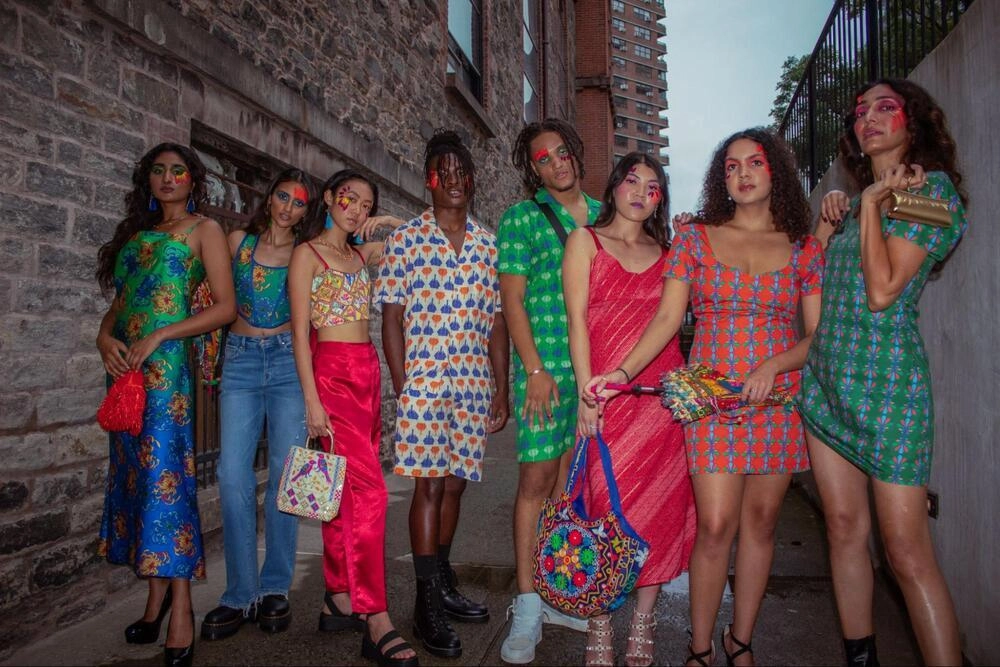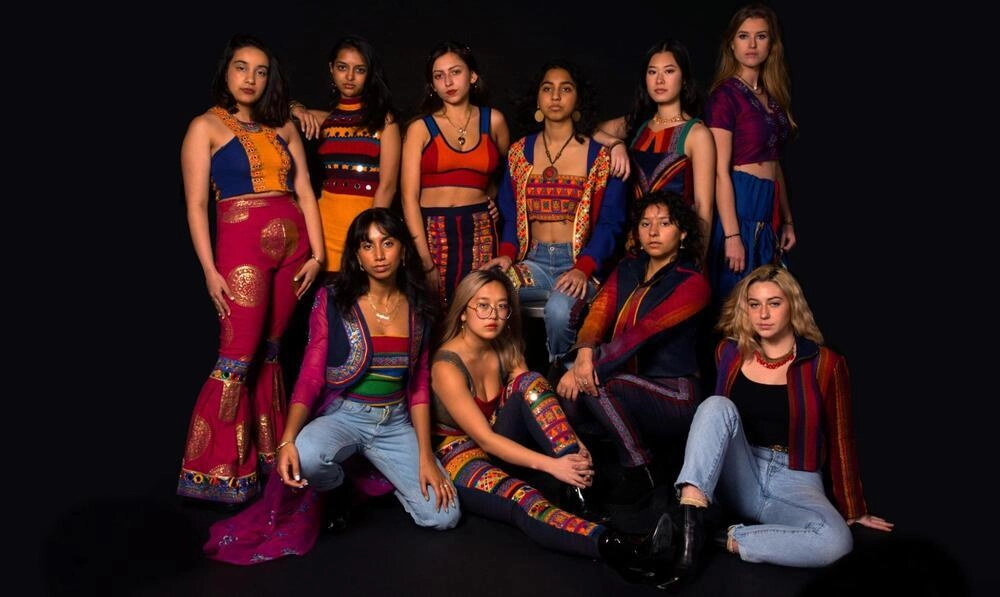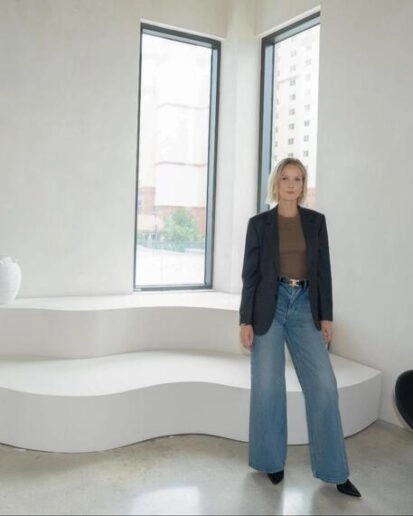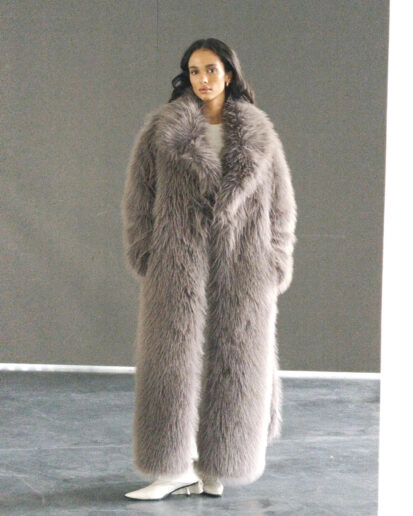
Sukalp Bhatija Bridges Tradition and Modernity in South Asian Fashion Renaissance
Delhi-born Sukalp Bhatija, the creative genius behind the rising South Asian fashion brand Sukushine, has made it her mission not just to preserve the intricate craftsmanship of her cultural heritage but also to push the boundaries of slow fashion in a globalized world. With her studio, she is reviving the deep-rooted textile traditions of South Asia, modernizing them while honoring the artisans who craft them.

Photo courtesy of Sukalp Bhatija
Sukalp’s work offers more than just fashion—it presents a narrative that fuses tradition with modernity, culture with sustainability. She embraces the painstakingly slow and detailed process of handmade textiles, challenging the prevailing ethos of fast fashion. Sukushine’s ethos celebrates vibrant, maximalist Indian textiles, standing as a testament to cultural pride and ethical practices.
Empowering Women Artisans
A cornerstone of Sukushine’s mission is empowering women artisans in India. The brand collaborates exclusively with women-led, small-batch manufacturers who handcraft the textiles and garments. This process ensures not only high-quality craftsmanship but also fair wages and opportunities for the artisans.
“Our goal is to provide a space where women can shine, whether through our garments or within our team,” Sukalp emphasizes. This commitment is reflected in every step of the design process, from the vibrant prints to the finished pieces.

An Immigrant’s Journey
Sukalp’s journey began in Delhi, surrounded by the vibrant colors and intricate textiles of Indian culture. However, her life took an abrupt turn when her family moved to the United States in 2009. The culture shock she experienced as an 11-year-old immigrant profoundly shaped her creative vision. “I didn’t feel at home for a long time,” she recalls. “I yearned to express my love for Indian textiles, their colors, and shiny embroidery.”
Her passion for textiles led her to study textile arts at the Maryland Institute College of Art. It was during her studies that Sukalp realized the origins of most techniques, fibers, and dyes she admired came from Eastern countries. Her desire to connect with her heritage deepened, driving her to practice traditional techniques and recreate the textiles she loved.
Later, at Parsons School of Design in New York City, Sukalp honed her design strategy and management skills, which would form the foundation of Sukushine. “Parsons taught me to think of design as not just an art form, but as a business with real-world impact,” she explains.

Blending Tradition and Modernity
Sukushine’s design philosophy is rooted in reimagining traditional South Asian textiles for a global audience. “I wanted to create clothing that spoke to both my heritage and the world I live in now,” Sukalp explains. Her bold, geometric patterns and vibrant palettes are paired with minimalist cuts, creating pieces that feel both timeless and contemporary.
Yet, Sukalp faces challenges. “Some people say our prints are ‘too Indian’ or ‘too colorful,’” she admits. “But Indian culture is maximalist by nature, and I hope to reach people who value its vibrant complexity.” For Sukalp, each piece tells a story of cultural pride, bridging generations and geographies.
Sustainability as a Philosophy
Sukushine’s commitment to sustainability extends beyond its designs. By employing traditional methods such as block printing, handloom weaving, and natural dyeing, the brand minimizes waste and ensures ethical production. “We believe in slow fashion as a philosophy, not just a trend,” Sukalp says. Each garment is a celebration of craftsmanship and a step toward preserving South Asia’s textile traditions.
Since its inception, Sukushine has made waves in the fashion world, participating in major events such as New York Fashion Week and South Asian New York Fashion Week. Its Rangeen Collection in 2023 received acclaim for its bold reinterpretation of traditional textiles. The brand’s collaborations with artists and musicians have further expanded its influence, particularly among younger audiences.
Pop-up markets like the Hester Street Fair and Renegade Craft Fair have allowed Sukushine to connect with a diverse, fashion-conscious audience. These events highlight the brand’s ability to merge cultural heritage with contemporary trends, resonating with a wide spectrum of customers.

Building a Future Beyond Fashion
Sukalp envisions Sukushine evolving into a broader lifestyle brand. While clothing remains its core, the brand has already expanded into home interiors and accessories, showcasing South Asian craftsmanship in new contexts. Sukalp is also exploring opportunities to collaborate with larger brands, bringing her textile designs to new audiences.
Through Sukushine, Sukalp hopes to inspire others in the Asian American and immigrant communities to embrace their heritage. “Owning a business that highlights Asian culture is incredibly rewarding,” she says. “It’s about creating a space where handcrafted, ethically produced work is valued.”
For Sukalp Bhatija, Sukushine is more than a brand—it’s a platform to honor her heritage and share it with the world. By celebrating the beauty and complexity of South Asian textiles, she is not only redefining ethical fashion but also championing the artisans who bring her vision to life. “Sukushine is a reminder to keep shining,” she says. “Through my work, I want to create a connection to something deeper—a celebration of tradition, sustainability, and the vibrant spirit of South Asia.”









